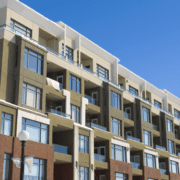Co-Living Apartments Create Attractive Opportunities for Both Investors and Tenants
According to a recent poll by Development Finance Today, 76% of industry professionals predicted a rise of co-living developments in 2019. Co-living communities are often found in up-and-coming neighborhoods or dense urban areas, which are often attractive to younger tenants due to their proximity to transport links, restaurants, and nightlife.
Co-living spaces allow renters impacted by rising prices in major cities to enjoy residing in a desirable location with amenities that resemble those of conventional Class-A multifamily apartments but at a fraction of the cost. Further, this type of space presents attractive opportunities for investors seeking higher rates of return on properties at a fraction of the cost.
Continue reading to find out why co-living spaces are expanding in cities with increasing costs of living and how they are creating attractive opportunities for both tenants and investors.
Benefits for Tenants
The success of co-living units in today’s market can be largely attributed to the Millennial tenant. Although most multi-tenant apartments are relatively small (only a few hundred square feet) and require tenants to share both bathrooms and kitchens, the affordability and flexibility associated with them are enough to drive this cohort to be less concerned about the need for complete privacy regarding their living quarters.
Tenant attraction to co-living is a natural extension of the rise in coworking spaces and boutique hotels. Communal spaces that create opportunities for building a sense of community and mingling with peers are popular amongst younger tenants and are revolutionizing the way they live and work together. Tenants view immersing themselves in a stimulating community as an additional benefit to the affordability and flexibility offered by co-living apartments.
Affordability
The average apartment rent growth continues to outgrow income throughout the United States. According to MarketWatch, renting a one-bedroom in most major U.S. cities requires Millennials to spend about 77% of their income. As the average cost of rent to income ratio becomes increasingly unbalanced, the demand for co-living units is growing.
According to co-living start -up company, Common, co-living is “one of the best and most direct means to achieve optimal density and affordable housing in the modern urban context.” On average, the cost of a co-living apartment is about 10-20% lower than that of a studio apartment. In addition to a lower cost of rent, co-living apartments are typically pre-furnished and provide amenities found only at luxury facilities, including house cleaning services, complimentary WiFi and utility packages, and a rooftop deck with a pool.
Flexibility
Co-living apartments provide Millennials with the flexibility that they desire without undertaking huge risks. Millennials value flexibility; they are less attached to the idea of property ownership than previous generations and are no strangers to relocating and traveling often. Co-living spaces typically offer shorter leases, creating the flexibility and convenience to transfer from one property to the next whenever they desire.
Benefits for Investors
Despite doubts from multifamily sector experts about the longevity of the co-living trend, investors are increasingly showing interest in it. One reason for this growing interest amongst investors is the expectation of higher rates of return on their properties as more Millennials migrate to big cities. Investors can also anticipate higher net rent premiums, net operating income, and occupancy rates from these spaces.
Higher Net Rent Premium
According to JLL, co-living spaces offer investors a 30% net rent premium as compared to that of traditional apartments. This is largely due to “co-living asset floor plans holding nearly twice the number of bedrooms as comparably sized conventional multi-family assets”, resulting in higher density. Global fundraising for co-living spaces is also reported to be around $300 million as of April 2019, an indication that investors are indeed attracted to this trend.
Higher Net Operating Income
The net operating income for co-living spaces is also higher than traditional apartments. Co-living units are able to demand up to 40% more than traditional rentals. By increasing density in the units and renting by the bedroom, operators are able to secure higher per square foot rents while tenants benefit from lower rents, simultaneously.
Higher Occupancy Rates
The high occupancy rates associated with co-living apartment spaces are another reason that co-living apartments are attracting investors. As previously mentioned, many factors contribute to these higher rates such as affordability, flexibility, as well as the amenities offered. As opposed to traditional apartments, even when there are vacancies in co-living units it is still likely to produce anywhere from 30-50% of the normal rent.
Future of Co-Living and CRE
While co-living apartments have yet to create a large disruption in the multifamily sector of CRE, it is a trend that is steadily increasing in popularity. Cities including New York City, Los Angeles, and San Francisco are areas where co-living apartments are already prevalent. As dense urban areas with large and growing talent pools continue experiencing higher average rents more cities are likely to adopt the co-living trend.
To learn more about trends within the multifamily sector, read Multifamily for Millennials: Top Trends in Amenities and Services.











